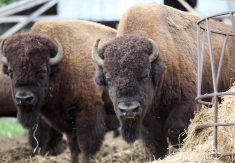Foot-and-mouth disease is much in the news these days. The mind boggles at the emotional and economic toll it is taking on European farmers.
As you know, foot-and-mouth disease affects cloven-hoofed animals. To date, thousands of European cattle and sheep, most of them healthy, have been destroyed in attempts to control the spread of the disease.
We’ve been reporting these efforts in the Producer lately, along with stories on how foot-and-mouth can be kept out of Canada. We recognize that we’re preaching to the converted by emphasizing this point to Western Producer readers, but some things bear repeating.
Read Also

High prices see cow-calf producers rushing to incorporate
Farm accountants are reporting a steady stream of cow-calf producers rushing to get their operations incorporated ahead of selling their calves this fall.
That said, recent coverage has prompted several staffers to ask: “Is foot-and-mouth the same as hoof-and-mouth?”
Yes. Until about six months ago, this disease was referred to as hoof-and-mouth in the Producer. We figured it was a more accurate description than was foot-and-mouth. But other media persisted in calling it foot-and-mouth, and then began to abbreviate it as FMD. Rather than risk confusion, we made the switch.
How did we come to the hoof-and-mouth term in the first place? The Producer library yielded no clues.
The Stockman’s Handbook, by M.E. Ensminger, 1983 edition, calls it foot-and-mouth. Ditto the volumes of Swine Science (by Ensminger) and Sheep and Goat Science (also by Ensminger. That guy was consistent.) The Pocket Companion to Veterinary Medicine, appropriately written by D.C. Blood, also called it foot-and-mouth in a 1994 volume.
Perhaps the hoof term came from an earlier era? Yet library volumes of Farm Animals in Health and Disease, published in 1954, stuck with foot.
You may think it strange that editors would spend time debating terminology like this, but clarity is the essence of an editor’s job. A newsroom is probably the only place where people actually debate hoof versus foot, and whether punctuation should go inside or outside a quotation mark. The goal of these debates is to enable quick reader understanding.
And if you should think punctuation is not important, I invite you to punctuate this sentence: A woman without her man is nothing.
A man of my acquaintance punctuated thus: A women, without her man, is nothing.
But a woman I know did it this way:
A woman: without her, man is nothing.
Big difference, wouldn’t you agree?















